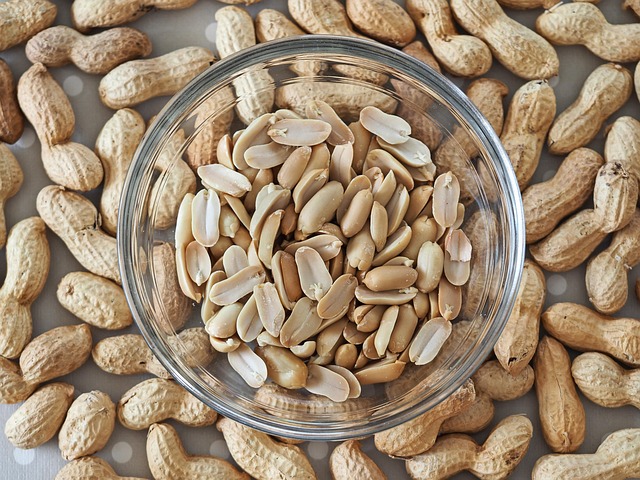Glue laminated beams (GLBs), engineered from bonded wood veneers, offer superior strength and environmental benefits. With exceptional dimensional stability and high load-bearing capacity, GLBs enable longer spans in architecture. Customizable with various wood species, they're an eco-friendly choice for construction projects, promoting efficient resource utilization without compromising quality or strength. Key considerations for selection include project demands, budget, availability, and sustainability goals. Responsible sourcing can lower their carbon footprint, making them a game-changer in modern architecture. Understanding specifications like size, depth, width, and material composition is crucial for optimal use.
Looking for the perfect structural solution for your building project? Discover the benefits of glue laminated beams, a modern timber product with exceptional strength and versatility. This comprehensive guide uncovers everything you need to know about these engineered wonders. From understanding the glue laminated beam definition and its advantages to exploring different types and choosing the ideal glue, we’ll navigate you through the process of selecting the right beam for your specific needs.
- Understanding Glue Laminated Beams: Definition and Benefits
- Types of Laminated Timber: Strengths and Applications
- Choosing the Right Glue: Factors to Consider
- Beam Sizing and Specifications: What to Look For
Understanding Glue Laminated Beams: Definition and Benefits

Glue laminated beams, often referred to as GLB or glue laminating beam definition, are an innovative and versatile building material composed of multiple layers of wood veneers bonded together with strong adhesives. This sophisticated process not only enhances the structural integrity of the beam but also offers a sustainable alternative to traditional solid wood beams. Understanding what is glue laminated beams is crucial for any construction project seeking both strength and environmental responsibility.
The benefits of using these beams in construction projects are significant. Glue laminated wood beams for construction provide excellent dimensional stability, making them ideal for spanning long distances without sagging or warping. Their high load-bearing capacity ensures safety and structural integrity, even in the most demanding architectural designs. Moreover, GLBs are made from various wood species, allowing for customization to meet specific project needs. For those looking to reduce their environmental impact, these beams offer a sustainable solution, as they utilize wood resources efficiently without sacrificing quality or strength. To learn more about how these innovative materials can enhance your next project, visit us at unalam.com.
Types of Laminated Timber: Strengths and Applications

Laminated timber, also known as a glue laminated beam, is an engineered wood product created by gluing together multiple layers of dimensional lumber. This process enhances the material’s strength and stability, making it an ideal solution for various construction projects. The type of lamination and the choice of timber determine the final properties of the beam, ensuring it meets specific structural requirements.
With superior compressive and shear strength, glue laminated beams are versatile and can be utilized in both residential and commercial buildings. They offer a sustainable alternative to traditional steel or concrete structures, especially for spanning long distances without support. For residential construction, these beams are perfect for creating open-plan layouts, as they allow for larger interior spaces without the need for additional supports. The future prospects of glue laminated construction look promising, with ongoing innovations optimizing dimensions and enhancing their role in modern architecture. To learn more about the best options for your project, give us a call at (607) 369-9341.
Choosing the Right Glue: Factors to Consider

When selecting the right glue laminated beam for your project, understanding the unique properties and environmental benefits of this construction material is paramount. Glue laminated wood, as the name suggests, involves gluing together multiple layers of wood to create a stronger, more durable structural element compared to conventional solid lumber. The process enhances the natural strength and stiffness of each individual board by binding them with high-performance adhesives, resulting in a beam that can withstand significant loads and span longer distances.
Several factors influence your choice: project requirements, budget, availability, and environmental considerations. Compare glue laminated beams to cross-laminated timber (CLT) for structural efficiency and versatility, as both are engineered wood solutions. The environmental impact of glue laminated wood is a growing area of interest; responsible sourcing and production can significantly reduce its carbon footprint compared to traditional construction materials. For more information on how do glue laminated beams work and to discover the ideal option for your project, visit us at unalam.com.
Beam Sizing and Specifications: What to Look For

When selecting a glue laminated beam for your project, understanding the right sizing and specifications is crucial (key requirements for glue laminated beams). These structural components are engineered through a meticulous glue lamination process for beams, ensuring superior strength and durability. For residential construction or other applications, it’s essential to consider dimensions that optimize the function and efficiency of the beam while aligning with your project’s unique demands.
The right beam size depends on various factors including span length, load capacity, and structural design requirements (glue laminated beams for residential construction). Look for key specifications such as depth, width, and material composition to ensure the beam meets both aesthetic and structural needs. Visit us at 18 Clifton St, Unadilla, NY 13849 anytime to explore our range of glue laminated components and find the perfect fit for your project (optimizing dimensions of glue laminated components).
When selecting a glue laminated beam for your project, understanding the material’s definition and benefits is key. By considering the type of laminate timber best suited to your needs, choosing the right glue, and knowing beam sizing specifications, you can ensure a strong, durable structure. Remember, the right glue laminated beam can revolutionize your building or renovation project, so take the time to make an informed choice.














